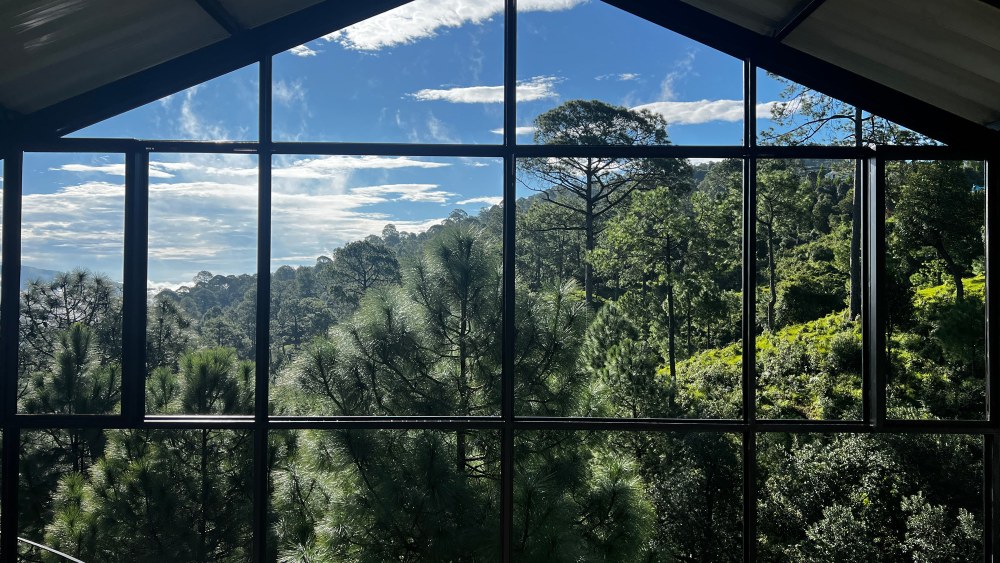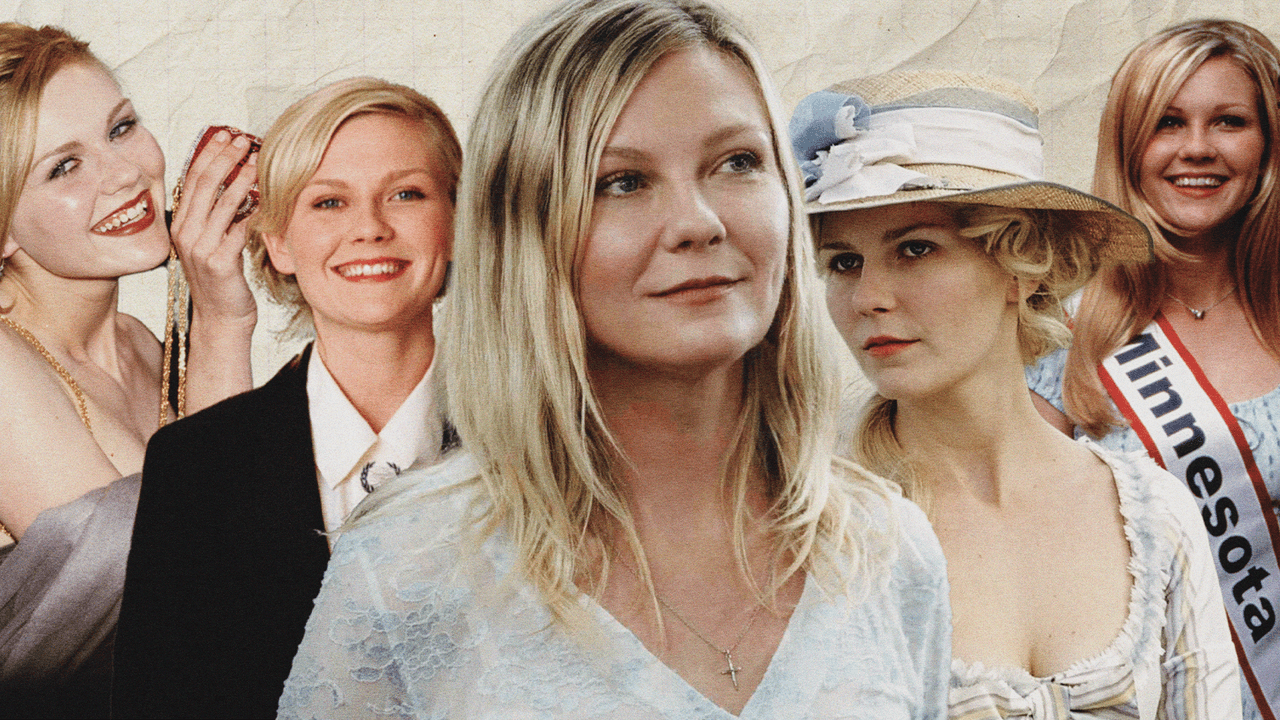
For the better part of three years, Rahul Mishra jokes that he has been a “full-time architect, part-time fashion designer.”
Mishra’s passion project is Aatman, a stunning home in Kalakhet, a village in India’s northern state of Uttarakhand, a fragile and beautiful eco-zone in the foothills of the Himalayas.
The first project under the banner of the designer/architect’s new Rahul Mishra Spaces venture, this six-bedroom property spans approximately 13,000 square feet and was conceived as both a home for the Mishra family and a property that can be rented out when not in use.
The home’s signatures, soaring inside spaces and elegant natural materials, are designed to match the spectacular vistas seen through towering floor-to-ceiling windows. There’s a wealth of seating options to take in the views or cozy up by the double-sided fireplace that delineates the living and dining rooms. There’s even a glass solarium that serves as a meditation space while the garden and its pond invite bird watching — and glimpses of other wildlife.
Mishra’s hand-embroidered swatches and woodblock printed textiles made in his atelier were used to furnish the rooms.

A look at Rahul Mishra’s Aatman in the northern India state of Uttarakhand.
Courtesy of Rahul Mishra Spaces
The home is self-sufficient thanks to solar panels that generate three times its energy needs with the surplus going back into the local grid. Rainwater collection and extensive composting is used to water and replenish the surrounding grounds and there’s even a small organic farm and orchard for fresh produce.
Yet describing it merely as a luxurious eco-friendly home would be doing a disservice to this soaring construction of steel, stone, wood and glass that was conceived as a family retreat by Mishra and his wife, Divya Bhatt Mishra, who is also the cofounder of his eponymous brand.
Owing its name to the Sanskrit word for “soul” or “self,” Aatman is the embodiment of an all-encompassing philosophy that underpins not only the fashion he creates but also the way his business is built.
A term used multiple times through the Hindu Bhagavad Gita scripture, Aatman is “not about acquiring anything, it’s not about finding something,” he explains. “It’s just about creating an energy source which is unified, where your mind, soul and body is all aligned together and find a purpose.”
The Aatman project was born out of Mishra‘s desire to marry sustainability and craftsmanship while ensuring fair wages for the craftspeople he employs.
During the early days of the COVID-19 pandemic, with his studio and factory idled, Mishra was hankering for “this kind of space somewhere in the mountains” for him and his family.
For months, the right spot in the hilly region he considers “one of the most beautiful landscapes in the world” proved elusive until he happened on the ideal spot that offered unspoiled nature and a strong connection to community.
But finding the property was only the first step.
While others were struggling their way through COVID-19, Mishra was taking “a crash course in architecture,” an interest of his that long informed his design work.

A look at Rahul Mishra’s Aatman in the northern India state of Uttarakhand.
Courtesy of Rahul Mishra Spaces
Buildings and cityscapes have been sources of inspirations for his past couture collections and his interest in industrial design was ignited when he learned about Vastu Shastra, a traditional Hindu architecture system aiming to integrate harmoniously structures and its inhabitants in their surroundings. Those principles felt like the right direction for the conception of Aatman.
Applying them was another matter.
Fortunately for the couture designer, his nephew was living with him and was deep into his studies during his first year of civil engineering. “That allowed me to study and learn with him the entire COVID time,” he said. “I just worked on making multiple iterations of this house to try and find the best ways to make it.”
The through line of Mishra’s approach was to “build without disturbance,” he says. Not only did local topography guide the structure, but sourcing and construction also followed that principle. Not a tree was cut or a stone blasted to make way for the building.
Old practices for the construction of hill houses influenced the design. Material choices were driven by local sources. Stones were repurposed from older, unused structures in the area and wood came from naturally fallen trees in nearby reserve forests.
Steel was used for the house’s structure, for its recyclability but also for lightness. Paired with wood, this resulted in a structure that’s 85 to 90 percent lighter than conventional steel structures for buildings of similar dimensions.
The result is a home that reflects harmony and rhythm.
“It’s like an interval, when you look at our heart, our breathing, sunrise, sunset, seasons — everything is all about the rhythm of nature,” he explains, noting that the house was designed to “follow nature’s pace rather than living a certain way.”
The home’s positioning was chosen to embrace the sun. Facing east, the double-glazed facade windows capture light from sunrise to gently warm the home, designed to be energy efficient.
Thermal regulation is built into the floor plan, making additional heating and air conditioning unnecessary. Open interconnected spaces encourage even temperatures throughout and strategically placed roof openings allow adjustments based on the season.
The result of Mishra’s efforts is a beautiful structure that reflects its surroundings and is designed to be disassembled when the time comes. In fact, the entire house is held together by nuts-and-bolt joinery.
“You can just take them out and you’ll be able to get a simple land that is surrendered back to nature when the house is gone,” he said.
That’s something that makes Mishra particularly emotional because it makes “Aatman as impermanent as it is enduring,” he said. “Ultimately, we need to understand that everything we create is completely impermanent — we ourselves are.”
#Rahul #Mishras #Sustainable #Residence #Himalayan #Foothills






